See Trials and Crucifixion of Christ, Part 2b. The Traps
We continue our series of transcriptions of Dr. Jeannie Constantinou’s podcasts on Ancient Faith Radio, “Search the Scriptures”. Today Dr. Jeannie begins her discussion of the trials our Lord Jesus Christ undergoes, first by the Jewish Sanhedrin. As always, she begins with a prayer.
“In the name of the Father, and of the Son and of the Holy Spirit. Amen. Illumine our hearts, O Master Who loves mankind, with the pure light of Thy divine knowledge. Open the eyes of our mind to understand Thy gospel teachings. Implant in us also the fear of Thy blessed commandments, that trampling down all carnal desires, we may enter upon a spiritual manner of living, both thinking and doing such things that are well-pleasing unto Thee. For Thou art the illumination of our souls and bodies, O Christ our God, and unto Thee we ascribe glory, together with Thy Father, Who is from everlasting, and Thine all-holy, good, and life-giving Spirit, now and ever and unto the ages of ages. Amen.”
Well, dear brothers and sisters, at last we have arrived at the program in which we begin to discuss the trials of Christ. First, the Jewish trial. I would love to be able to talk about so many important details related to the Passion, including the betrayal by Judas, the Last Supper, Peter’s denials, etc., but we will have to reserve those lessons for the time when we do an in-depth study of Matthew’s Gospel because all of our time for the next couple of programs will be taken up with the trials and the Crucifixion.
Judas’s betrayal: fact and fiction
But before we begin our study of the Jewish trial, I would like to make one comment about the betrayal by Judas. People have difficulty understanding why Judas betrayed Christ. The hymns of the Church during Holy Week uniformly attribute the betrayal to greed, and that comports with the witness of the Gospels. Movies and books try to excuse Judas in some manner by saying he didn’t really want to betray Christ, that he was tricked into doing it, and he believed that Christ would extricate Himself and show His power; but all of the Gospel witnesses say that He betrayed the Lord for money. It’s a very crass motive, but it’s the truth. I don’t know why people are so fixated with this idea, but I don’t think I’ve ever seen a movie that ever tells the truth about Judas. People seem to be quite obsessed with this.
Other people say, “How could Judas be at fault for betraying Christ when it was necessary for him to betray Christ? After all, it was prophecy.” But it was not necessary for Judas to betray Christ, even though there was a prophecy that Christ would be betrayed, because Christ said, “Woe to the person who betrays the Son of Man”, right? I mentioned to you that there were countless instances in the Gospels in which Jewish leaders wanted to or attempted to arrest Christ but they did not. In the synoptic Gospels, that is, Matthew, Mark and Luke, they usually state that the Jewish leaders did not arrest Christ because they feared the multitude. And John’s Gospel says something similar; and also, more frequently, says that Christ’s “time had not yet come” and that’s why He had not been arrested.
Foreknowledge, and predestination
Judas did not make it possible for them to arrest Christ. He just made it easier. They could have and they would have arrested Him even without Judas, but there would have been a great commotion among the people because the people loved Christ. And you see there’s a great difference between the knowledge that Judas would betray Christ or the prophecy that Christ would be betrayed and predestination. Judas was not predestined to betray Christ. It was his choice. There is a difference between foreknowledge and predestination.
I’m going to give you an example that anyone can understand. Maybe it’s even a silly example. It’s a simple example, but I think you’ll get the point. Now the example is this. Whenever my husband and I would go someplace for ice cream, he would always order plain chocolate ice cream. You could take him to the fanciest ice cream parlor. You could offer a dozen varieties of ice cream: ice cream with chocolate chunks and double chocolate and fudge ripples and mint and marshmallows—it never made any difference. He only wanted plain, chocolate ice cream. Now this has gone on for the thirty years that I have known him. He only orders plain chocolate ice cream! Now, I know exactly what he’s going to choose. Does that mean that I force him to choose it? Do you see the difference? Because I know what he’s going to pick does not mean that his choice is restricted. You yourself can also probably think of many such examples among the people whom you know well.
Now I ask you: How well does God know us? God knows us better than we know ourselves. God knows the future, so of course He knew what Judas would do; but He did not compel Judas to betray Christ. It is “the will of God that all people be saved and come to the knowledge of the truth.” That’s from the Bible. If you don’t know where it is, look it up. You should be looking some things up on your own.
God’s will is “that all people be saved and come to the knowledge of the truth.” That’s a very important line that is frequently quoted in the prayers of the Orthodox Church. Christ loved Judas too, and He wanted Him to be saved. Christ died for Judas too, but Judas did not choose to be saved and instead chose to betray Christ. Sometimes a philosophical question is posed: Is there anything that God cannot do? And yes, there is one thing God cannot do: God cannot force us to love Him. That’s why predestination is absolutely incompatible with what we know about God, because God allows us free will, free choice. In order to be able to love God we have to be able to have the choice to reject Him, because if someone holds a gun to your head and says “You will love me”, well you know, that’s not love. So in order to have love we must have choice.
So, all Judas did was make the arrest easier because he led the Jewish leaders to where Christ and the disciples were spending their nights that week on the Mount of Olives. The Jewish leaders were able to arrest Christ secretly and try Him secretly in the middle of the night and avoid complications by arresting Christ in a public place. Christ was going every day to the Temple and teaching. They knew He was there. They could have arrested Him but they were afraid. So Judas makes the arrest easier. He does not make it possible. They could have arrested Him and dealt with the crowd somehow, but this way they not only arrested Him easily and quietly, but they put Him on trial in the middle of the night. When the people start to find out what’s happening… do you know when they start to find out what happened? When He’s on the way to the cross! When He’s carrying His cross and they see Him in the streets of Jerusalem. We see how the people are reacting and the women are crying—that’s in the Gospel of Luke. That’s when they find out. We’ll get to the scene where they shout “crucify Him” later and we’ll talk about what was going on there.
Don’t learn the Bible from the movies.
There was much discussion about the Mel Gibson movie, “The Passion of the Christ,” when that came out a few years ago. Gibson defended the movie as absolutely historically accurate. I wish that were true, but unfortunately it is not true. He said that his only sources were Matthew, Mark, Luke and John, and he did use some of the Gospels. But he used a lot of other things, too. Some of the scenes were part of Catholic tradition. Gibson is a very devout traditionalist Catholic and it was very evident in the way he portrayed the movie that he was purposely copying some details from the “stations of the Cross,” which is a service or ritual of Catholic piety. He’s perfectly free to do that. He’s a filmmaker and there’s nothing wrong with that, except when you say that everything in them movie comes from the Gospels. He also added some other details that Catholic professors here at the University of San Diego told me come from the visions of a certain Catholic mystic.
One of our New Testament professors told me that she counted over forty historical errors in the movie. I didn’t try to count them myself, but I wouldn’t doubt that number because there was a tremendous amount of historical misrepresentation in the “Passion of the Christ” movie, and as I think of some of the errors, I might mention them. The first mistake that comes to mind has to do with the Jewish trial, and this was just absolutely glaring to me. The movie was very well done, there’s no question about that. It was very visually beautiful, its cinematography was beautiful, but I always warn people: Don’t try to learn your Bible from the movies. I have never seen a movie about a Bible story that was accurate. Another recent movie was called “One Night With the King” and it was supposed to be the story of queen Esther, which is a wonderful idea for a movie. People told me it was very good, so I rented it, but the movie was absolutely ridiculous. It departed from the true Bible story in so many ways, and some places it was just plain silly, not to mention inaccurate historically. So sometimes it’s better to just read the Bible to your kids and forget about taking them to see movies to learn about the Bible, because there are usually many, many mistakes in them. I would say the best production I have ever seen about the life of Christ, which is very well done and almost entirely accurate historically and biblically with a few exceptions, was the Franco Zeffirelli miniseries called “Jesus of Nazareth.” It’s the only one I would encourage anyone to watch, because it’s very well done and pretty accurate. But speaking of Judas in connection with this, that was one of the mistakes in the Zeffirelli miniseries. When they give Judas the money for betraying Christ they hand it to him as though it were an afterthought—“Oh by the way, why don’t you take this for your trouble”—and then he seems surprised to receive it, as though he hadn’t negotiated a price, which we know he did. So this is another example that somehow they just don’t really deal with Judas accurately.
Now returning to the question of the accuracy in the Mel Gibson movie. I thought of it because of the Jewish trial, which is what we’re going to begin discussing. After Christ is arrested the movie shows Him being brought to some place, and it seems to be the Temple, but they don’t say where he is brought. It seems to be the Temple but we never really know. Now, where was Christ really brought for the trial? He was not brought to the Temple. He was brought to the house of Caiaphas. And who was there in this room for the trial in the movie? It has to be the Jewish trial that Gibson is showing in the movie because later there is the trial before Pilate. So this must be the Jewish trial. Now who was there in the movie? It’s not the Sanhedrin. It’s a like a mob scene. There’s no trial, there are no witnesses called, and practically everybody you know is there. Mary Magdalene is there, Mary the mother of Christ is there. They find out that He’s been arrested and they run down there, and they’re watching this. Peter is there, the disciples are there. It’s ridiculous. Christ is in the middle and people are shouting at him. It’s not a trial, it’s a mob scene. And one of the worst things about the movie is that it depicted Mary Magdalene as the woman who was accused of adultery whom the Lord saved from being stoned to death. This just boggled my mind. I have no idea why he would do that. It’s a beautiful scene, but I didn’t understand why Mel Gibson couldn’t have some other woman playing the adulterous woman rather than the actress who played Mary Magdalene. It’s a terrible insult. By the way there is absolutely no hint in the Gospels that Mary Magdalene was ever a prostitute and certainly not an adulteress. She did not live a life of sin. There’s no hint of that in the Gospel, but for some reason this has become the western tradition about Mary Magdalene, and its roots is in one of the popes, Gregory the Great. For some reason he identified her with the sinful woman and ever since then poor Mary Magdalene has been maligned in the West as a sinful woman. If you want to know what she was known for, look it up.
This is how Mel Gibson presents the scene and it’s ridiculous, because in fact, no one was there except the Sanhedrin. That’s why Judas was useful, because he helped them arrest Christ in a place where there wouldn’t be a crowd. They put Him on trial before the Jewish leaders and find Him guilty of a crime, all before morning. And everything was done in secret. That’s why Judas was useful. We know that Peter, of course, followed to watch, to see what would happen to Christ; but he was not in the room during the trial. He was out in the courtyard. So you might ask, “Well then, how do we know what happened to Christ at His trial?” We know because there were people who were followers of Christ who were part of the Jewish leadership. So obviously later they told the disciples about what happened. Anyhow, don’t rely on the movies to learn about the Bible. I know you people don’t, but this is a very good reason why you should not.
The mystery of the Passover
Now let’s move on. After they arrested Christ they were resolved to put him to death before the Passover. It was urgent. Why at that time? Why did they consider it so urgent? Now we spoke about how there were two events that made the Jewish leaders decide that they must act immediately to put Christ to death. First there was the raising of Lazarus, and secondly, the triumphal entry into Jerusalem. We know from the Gospel of John that after watching how the people acclaimed Christ as the Messiah and the King of Israel, the Jewish leaders had a council, where they said, “We have to take care of this problem right now.” And in fact the high priest states, basically, a prophecy. John says it’s a prophecy. He said, “It is better that one man die rather than the whole nation be destroyed.” So they decided that even if He’s innocent it’s better for Him to be killed. Still let’s return to the question of why now. Why before the Passover? Why didn’t they wait until after the Passover had been concluded and the crowds had left Jerusalem, and they could sort of do away with Him rather quietly? The answer involves why all of this happened during Passover.
Have you ever thought of how meaningful, how amazing, how beautifully conceived the plan of God was to have the Passion and the Resurrection occur during Passover? It’s remarkable. What does Passover commemorate? It commemorates the deliverance from slavery in Egypt and the entrance into the Promised Land by the Jewish people. Their leader was Moses. Now this event was the foreshadowing of what would happen later through Christ. Especially in the Gospel of Mathew we see Christ portrayed as the new Moses, the one who gave the new Law. He is the one who will now lead us from the slavery—not in Egypt, but the slavery of sin and death, and to the Promised Land—not the land of Israel, but the Kingdom of Heaven.
This is what the Fathers of the Church called, “typos”, typology. That was a very common way to interpret Old Testament events. The Fathers of the Church saw many events of the Old Testament as a foreshadowing of later events and persons in the New Testament, and this foreshadowing was called the “type.” You have the type, the Old Testament, and you have the fulfillment, or as some people call it, the “antitype,” in the New Testament. Another example is the sacrifice of Isaac by Abraham. Abraham was going to sacrifice his beloved son, and that’s a foreshadowing of the fact that God the Father sacrificed His Son, His beloved and only Son.
So you see Passover takes its name from the last of the ten plagues which Moses brought against Egypt so Pharaoh would allow the Hebrew slaves to leave. The last plague was the death of the first born in the land, but Moses told the Hebrew people to sacrifice a lamb and place the blood of the lamb over their door posts, so that when the Angel of Death would come, it would pass over the houses of the Hebrews and kill only the firstborn of the Egyptians. Thus, the Hebrews were saved by the blood of the lamb, and that’s why Christ is called The Lamb. We too have passed over, or will pass over, from death into life because of the blood of the Lamb. Christians have always understood these Old Testament events as “types,” which had their fulfillment later in the New Testament.
Now I’m going to ask you a question I want you to ponder. Why was there no lamb at the Last Supper? Because the Last Supper talks about bread and wine and herbs, but there is no lamb mentioned. Historically, it is true that Christ, knowing He would be dead on the day of Passover, ate the meal with His disciples early, “in anticipation.” He provided for them the theological meaning of His death, instituting the Eucharist within the context of the Passover meal. That might be a historical reason but that’s not the real reason why there was no lamb. We’ll talk about it when we talk about the Crucifixion—see if you arrive at the right conclusion.
So why is it that He institutes the Eucharist at the Passover meal and then He says: “Do this in remembrance of me”? I know that our Protestant friends say that that means that Communion is a memorial meal, “Do this in remembrance of me.” It’s purely “symbolic.” But the consistent witness in the Bible is that Communion is the Body and Blood of Christ. You can’t read John 6, which was written in the first century—you can’t read that and conclude that it was not considered the Body and Blood of Christ. You can’t read 1 Corinthians 11, which was even earlier than the Gospel of John, and not conclude that early Christians believed that Communion is the actual Body and Blood of Christ. That was the teaching of the early Church. That is the consistent witness from Apostolic times through today. So why did He say, “Do this in remembrance of Me”? Because when they would gather for a Passover type of meal with the bread and the wine, from then on, rather than remembering at this time of year the deliverance by Moses from slavery in Egypt and entrance into the Promised Land, they would now remember Christ and His deliverance of us from the slavery of sin and death to the Promised Land of the Kingdom of Heaven. That’s why He said, “Do this in remembrance of ME.” That’s why the Orthodox Church continues to tie its celebration of Pascha to the Jewish celebration of Passover. You see, that connection has been lost in the West, because western Christians celebrate their Easter before Jewish Passover. This is how it happens on a consistent basis most years. They don’t really see the connection, but we do. We see the connection. We celebrate Pascha after Passover, and this is why: Because the Lord said do this in remembrance of me, so we do it. We remember the Christian Passover. The Christian Passover happened after the Jewish Passover was completed. Christ rose after the Jewish Passover so we must wait for the Jewish Passover too. That’s the reason for the difference in the dates. The way we calculate the dates is exactly the same except for that detail which we insist upon because of the deep connection to the meaning of Passover.
Political overtones of the Passover in Jerusalem
Now back to our story. Why did the Jewish authorities decide that Christ must be done away with before the feast of Passover? Well, the Jews came to Jerusalem for the Passover from all over the world, but certainly those who were in Palestine, who were strong enough to travel to walk to Jerusalem who were living within a few days walk of Jerusalem, they would come to the city for the Passover. The normal population of the city was about 50,000 people, but during Passover it swelled to more than four or five times that size. So it would swell to about 200,000–250,000 people. Now, when you have a large crowd of people together at one place at the same time, and especially when there are a lot of religious and nationalistic fervor associated with it, you have the potential for riots and insurrection. Passover was always a time of strong nationalistic and religious feeling because the Jews were remembering their deliverance from the slavery under the Egyptians and their hope remained alive for the Messiah to appear and deliver them from the Romans. So every Passover, Jerusalem was a pressure cooker ready to explode, even during an ordinary Passover. But this was not an ordinary Passover because among them was someone who had just raised a man from the dead—Lazarus—and was welcomed into the city like a triumphant hero. It would not have taken much to spark an insurrection, a riot, a revolt against the Romans had Christ wanted to start one. So the threat was very, very real. The Jewish leaders did not know that Christ had no intentions of starting a revolution. They didn’t know that He had no political aspirations whatsoever, but as far as they could see, there was a real threat.
Pilate was not usually in Jerusalem. The capital of the province, the Roman province of Judea, was not Jerusalem because the Romans did not like Jerusalem. It didn’t have anything fun. There were no Roman temples, there were no baths. It didn’t have the usual amenities that Romans liked to have. So the capital of Judea was a magnificent Roman city built by Herod the Great on the shores of the Mediterranean Sea, which he dedicated to Augustus and called it Caesarea, specifically “Caesarea by the Sea” or “Caesarean Maritima.” The ruins of that city have been uncovered, by the way, and if you ever go to Israel you can see parts of it. That’s where Paul was imprisoned before he was sent to Rome when he appealed to Caesar, and you can see the very theatre where St. Paul preached to Herod Agrippa. So, that’s were Pilate spent most of his time, but during Passover he would come, (and every Roman governor would come), to Jerusalem with a large number of soldiers as a big show of strength to discourage rebellion. The Romans were very aware of the potential for an uprising during the Passover season. And this is why Pilate releases a prisoner for them, not out of the goodness of his heart, but to try to pacify the crowds and let off some steam. And by the way, at this point the Romans are not involved. I have seen some movies where they show Jesus—I can’t remember if the Gibson movie was like this—but I’ve seen where they showed Jesus being arrested by Roman soldiers. That did not happen. He was arrested by Temple guards. The Jews had their own temple police force, their own security system, and they were sent to arrest Christ. The Romans are not involved yet. That will happen after the Jewish trial.
The Jewish trial.
Now let’s begin the Jewish trial. First I’m going to read for you the entire text of Matthew regarding the Jewish trial. This is the Revised Standard Version, and generally speaking, it is more accurate. The Orthodox Study Bible uses the New King James Version and later when we do our introduction to the Bible I will explain to you why I think they chose the NKJV, but that’s not important at this point. I’m going to be reading Matthew 26:57, skipping over verse 58, which describes Peter following behind, and then continuing with the trial, 59 through 66.
Then those who had seized Jesus led him to Caiaphas the high priest, where the scribes and the elders had gathered. Now the chief priests and the whole council sought false testimony against Jesus that they might put him to death, but they found none, though many false witnesses came forward. At last two came forward and said, “This fellow said, `I am able to destroy the temple of God, and to build it in three days.’” And the high priest stood up and said, “Have you no answer to make? What is it that these men testify against you?” But Jesus was silent. And the high priest said to him, “I adjure you by the living God, tell us if you are the Christ, the Son of God.” Jesus said to him, “You have said so. But I tell you, hereafter you will see the Son of man seated at the right hand of Power, and coming on the clouds of heaven.” Then the high priest tore his robes, and said, “He has uttered blasphemy. Why do we still need witnesses? You have now heard his blasphemy. What is your judgment?” They answered, “He deserves death.”
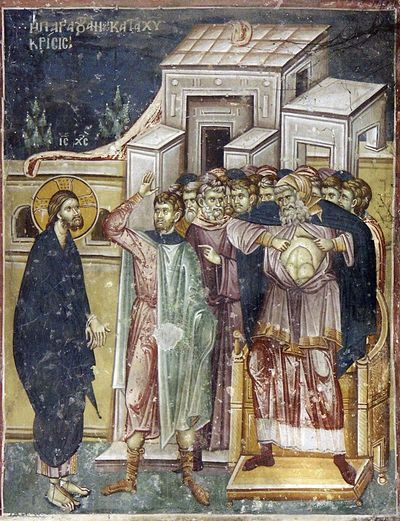 Holy and Great Friday. Christ being questioned by Caiaphas the high priest. Fresco in Staro Nagoricno, Macedonia. 12th-14th c.
Holy and Great Friday. Christ being questioned by Caiaphas the high priest. Fresco in Staro Nagoricno, Macedonia. 12th-14th c. The night trial
Let’s begin with that first verse, verse 57. “Then those who had seized Jesus led him Caiphas the high priest, where the scribes and the elders had gathered.” By almost any conceivable standard the time and the place of this Jewish trial of Christ violated Jewish law. According to the Mishnah, which is the Jewish legal code, a Jewish criminal court could only convene during the day and it was required to adjourn at sunset. If the proceedings, which are detailed in the Gospels, were in fact the Jewish trials of Christ, they violated Jewish law because they occurred at night. Now there is some controversy about the Mishnah, which was written down after the time of Christ. It was based on oral law, and there’s some controversy about how well it reflected actual practices during Second Temple Judaism, during the first century, basically toward the end of the time when the Temple still existed. So there’s some controversy about whether it does reflect the standards. We know they had standards and they were very good standards. It makes sense to only allow trials to take place during the daytime because trials which take place at night, especially in the middle of the night, are apt to produce unjust results. There’s a lack of fairness there. There’s an obvious lack of fairness when things are done secretly. This is why today in all civilized countries trials are performed in public, so people can see. It’s a measure of protection for the individual accused. So if this is in fact the Jewish trial, and I’m saying, “if,” because it’s possible that this was some other proceeding designed to gather evidence to use against Christ, because it seems that the following morning there was yet another trial, which was in fact a mere formality.
The morning trial
It seems that in the morning there was another meeting of the council because in Matthew 27:1-2 it says this: “When morning came, all the chief priests and the elders of the people took council against Jesus to put Him to death.” Doesn’t that seem strange to you? Because we just heard about the trial in chapter 26, now chapter 27 begins and it seems to be repeating itself. Well, probably what happened is that the “trial” in the middle of the night was really more like a preliminary hearing or some way to gather evidence against Christ to have the official trial the following morning. The same thing is reflected in Mark 15:1. Luke describes the trial that took place in the morning in 22:66. He doesn’t talk about the middle-of-the-night trial. So there seems to have been another trial in the morning, which involved the same persons, the same council, and echoes the same condemnation of the previous night. However, that does not mean that it was a legal proceeding, because criminal trials were not permitted on the eve of the Sabbath or the eve of a holiday. That particular day, if they held the actual official trial on Friday morning, was both the eve of the Sabbath and eve of a holiday, which is Passover.
Another aspect of Jewish law that was violated was that a guilty verdict could not be pronounced the same day as the trial. This is another very intelligent rule. Judges were required to consider their verdict overnight unless they were going to acquit the person. But if they were going to find them guilty, they had to be allowed time to think about it. Again, you can see how this would avoid injustice, avoid the railroading of an individual, or making decisions or judgments based on emotions of the moment. So whether the trials recorded by the Evangelists was the actual trial in the middle of the night or some sort of preliminary hearing or type of investigation to bind Christ over until the next morning—any way you look at it, the Jewish trial of Christ was conducted in violation of basic Jewish law. So, on a number of other points that we will not go into, the trial and condemnation of Christ violated basic requirements, and even fundamental fairness, because you don’t have a trial of someone in the middle of the night. Of course, there were other requirements of the law that were violated. But I’m sure that the Jewish leaders felt that these were emergency measures because of the extreme danger of the situation, and because of what Christ represented.
False testimony
Now let’s take a look at verse 59. “Now the chief priests and the whole council sought false testimony against Jesus that they might put Him to death.” “Now” refers here to the council. We presume that the council is the Great Sanhedrin, although it is never called the Sanhedrin. It’s called that in the hymns of the Church on Holy Week. Why do we think it was the Great Sanhedrin? First, because the person who was presiding over this trial was the high priest, and he presided over the Sanhedrin. Secondly, only the Great Sanhedrin had jurisdiction in three types of critical cases. They had “first jurisdiction.” They were the court of “first jurisdiction,” which means that they were the only court that could try three types of people. First, a false prophet, which is the basis of the charge against Christ. Secondly, the king. And third, the high priest. And it’s so ironic that they think they’re trying Him as a prophet, but who they are really trying is the King of Israel and the High Priest of Heaven. The Great Sanhedrin was the highest ruling body of the land. It consisted of 72 men who were the leading figures of Jerusalem, including chief priests, Sadducees elders and some Pharisees. Under Jewish law, the Sanhedrin was only allowed to convene during the day and only in a special room in the Temple complex called the “Chamber of Hewn Stones.” So, here again, we see this law being violated—this law requiring them to meet in a specific place.
There were other Sanhedrins. This is why it’s called the Great Sanhedrin. It’s the most important ruling body of the Jews. There was no king in Judea at this time, so the Sanhedrin was the legislative body. It enacted regulations for the religious and political life of the people. It was the highest authority in the land. There was a Great Sanhedrin of 72, there were also Lesser Sanhedrins of 23 judges, and then even smaller courts of 3 judges found in villages and towns throughout the area.
Further it is written that the council met and “sought false testimony.” This is not a good translation. It really should say, “they were seeking”, because it is the imperfect tense (ezetoun). “They were seeking false testimony,” not the aorist tense, “they sought.” Because this word, “they were seeking”, suggests that they were searching for witnesses for a period of time, witnesses whose testimony could convict Christ. This seemed to take a while because it says, “they were seeking.” The falseness of the witnesses and their testimony is emphasized by Matthew. The council searches for people to come forward. They’re searching for false witnesses. I’m sure they would be happy with true witnesses but they weren’t able to find any! So they are searching even for false testimony, so long as it will stick. And this false testimony of course highlights the treachery of the leaders, the injustice of the trial, and of course the innocence of Christ. Verse 60 reads, “But they found none” (no false witnesses) “though many false witnesses came forward”… “at last, two came forward”. So what does that mean? “They found none, though many came forward, then two came forward.” At least two witnesses were required for a conviction under Jewish law. And furthermore, their testimony had to agree on all relevant details. So you could bring a thousand witnesses to offer testimony, but if their testimony was conflicting it could not be admitted into evidence. So finally they found two. This seems to have taken quite a long time. They probably took two people aside and said, “Look, get your story straight and come forward with something that you’ll agree upon so we can be done with this.”
So, finally they find two who testify to the same thing. Now there’s a charge that can be brought. By the way, in Jewish trials all witnesses were men. Women were never permitted to be witnesses in Jewish courts. They were excluded from testifying along with insane people, children, the mentally retarded and anyone with a handicap. So women were lumped together with those groups because they were considered inherently unreliable” witnesses. I think it’s very interesting that they’re the ones who become the witnesses of the Resurrection. There is a lot of meaning to that, isn’t there? Thus, all of these witnesses were men. That is one reason why the disciples don’t believe the women when they come and say, “The tomb is empty” or “We have seen the Lord,” because women were not considered reliable as witnesses, in a Jewish mind anyhow. Christianity changed all of that, thank God.
Verse 61: “So they found two who came forward and said: ‘This fellow said, “I am able to destroy the Temple of God and to build it in three days’.” Let’s start with the beginning: “this fellow said.” Now did Christ ever say that? Did Christ ever say, “I am able to destroy the Temple of God and to build it in three days”? Usually when I ask that question most people say, “Yes, He said that.” But He never said that. He said something similar. That statement is not found in any Gospel. He never promised to destroy the Temple. A similar statement can be found in John 2:19. “After Christ cleansed the Temple, the Jewish leaders asked Him by what authority do you do this?” Remember the question about authority that we addressed last time? And Christ replied, “Destroy this Temple and in three days I will raise it up again.” John tells us that He is referring to His body; His authority would be proven by His resurrection. The witnesses at Jesus’ trial completely distort the statement. According to the witnesses, “This man said, ‘I will destroy the Temple’,” the one doing the destroying is Christ and the Temple being destroyed is Herod’s Temple, the Second Temple. But in Christ’s statement the ones doing the destroying are the Jews and the Temple being destroyed is Christ’s own body. So they got it wrong. But the council didn’t care, because at last now they had two witnesses who agreed and the charge can stick. Now there is a trial.
“There will not be one stone left upon the other.”
Before we move on let’s consider why this was such a big deal. What if Christ really did say that He would destroy the Temple, because He did predict the destruction of the Temple. It’s interesting that they don’t level that charge. Perhaps because they didn’t know about it. When Christ predicted the destruction of the Temple, He was standing on the Mount of Olives. The disciples were admiring the beauty of the Temple from afar, and then Christ said, “There will not be one stone left on top of another”—and they were shocked. So He predicted the destruction of the Temple. What if He really did say, “I will destroy the temple”? No one could destroy a huge Temple, let alone build it up again in three days.
Why would the Jewish leaders be so upset about what clearly seems to be an impossible claim? Well, if you look in the book of Jeremiah chapter 26, you will see that the priests and the false prophets at the time condemned Jeremiah to death for predicting—merely predicting—the destruction of the Temple. He was not in fact executed. They even pronounced a very similar judgment, in Jeremiah 26:11. Although Christ was eventually condemned for blasphemy, the testimony regarding the destruction of the Temple was a historical truth, and this is one of the factors that motived the Jewish leaders to arrest and try Christ. They were concerned for the survival of the Temple. The statement that the false witnesses say Christ made was a serious one. It was considered a threat against the Temple. The significance of the Temple in Jerusalem cannot be overstated and really can’t be comprehended by us. The Jews believed that through the Temple God dwelt among His people. He affirmed their election as chosen ones. He was with them, His presence was there They didn’t think of it in a silly way, that God was confined to the Temple, but that His presence was with the people by means of the Temple. And when the zealots succeeded in starting a revolt against the Romans later in the year 66, they never believed that the Temple would be destroyed. They believed, in fact, that they were certain to win, because God was with them. When the Temple was destroyed in the year 70 as Christ had predicted, it was, along with the Holocaust, the most tragic event in the history of the Jewish people. Judaism was never the same after that.
At the time, the Temple occupied about 25 percent of the land in the city of Jerusalem. Imagine the city where you live, and 25 percent of it taken up with one big complex. How important would that be, just from an economic standpoint? The Temple was not only economically vital for the livelihood of practically everyone in Jerusalem, but it was a center of national life and identity. It was the political and religious center of the nation. It’s not surprising that the threat of its destruction would be viewed with the utmost seriousness—for economic reasons, but also for religious ones. It would be saying that God had abandoned His people. So these statements really struck at the heart of Judaism. And, of course, we see that the chief priests and the high priests are alarmed at these statements about the Temple.
Even though, of course, this was a seemingly impossible claim, they can’t accept the idea that God would allow the Temple to be destroyed. But there’s more to it than this as we will see later when we continue the interchange between the high priest and Christ, because after this, the high priest stands up and asks the Lord: “Have you no answer to make? What is it that these men testify against you?” Next time we are going to continue our discussion and see what Jesus said to Caiaphas and what Caiaphas says to Him, and what it all means. But for now we must conclude, and we will conclude with our prayer: “Lord, now let Thy servants depart in peace according to Thy word, for our eyes have seen Thy salvation which Thou hast prepared before the face of all peoples, a light to enlighten the Gentiles and the glory of Thy people Israel. Amen.”
Presbytera and Dr. Jeannie Constantinou’s podcasts can be found here.

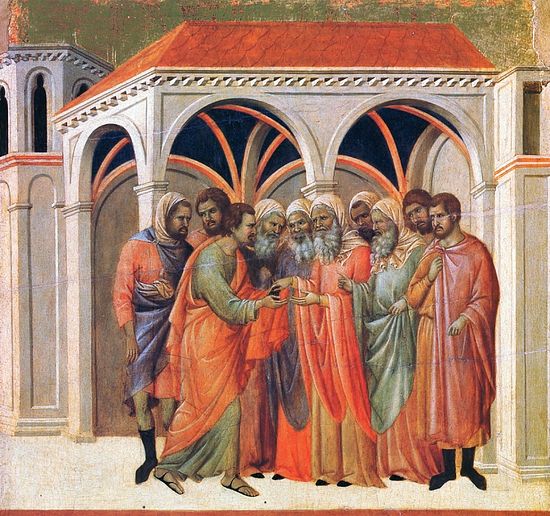
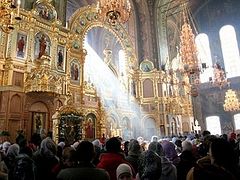
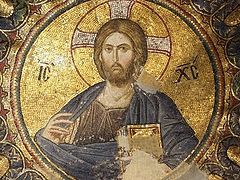
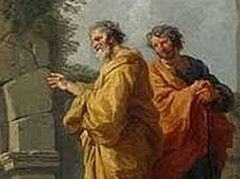
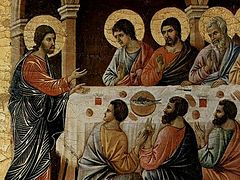
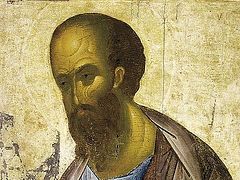
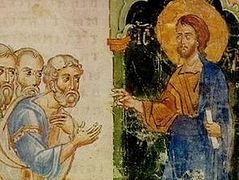
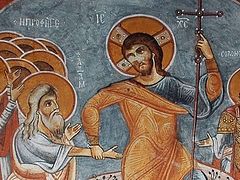
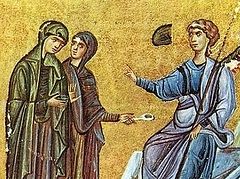
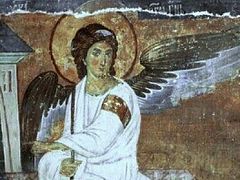
This encourages me to read everything else Dr. Constantinou has posted.